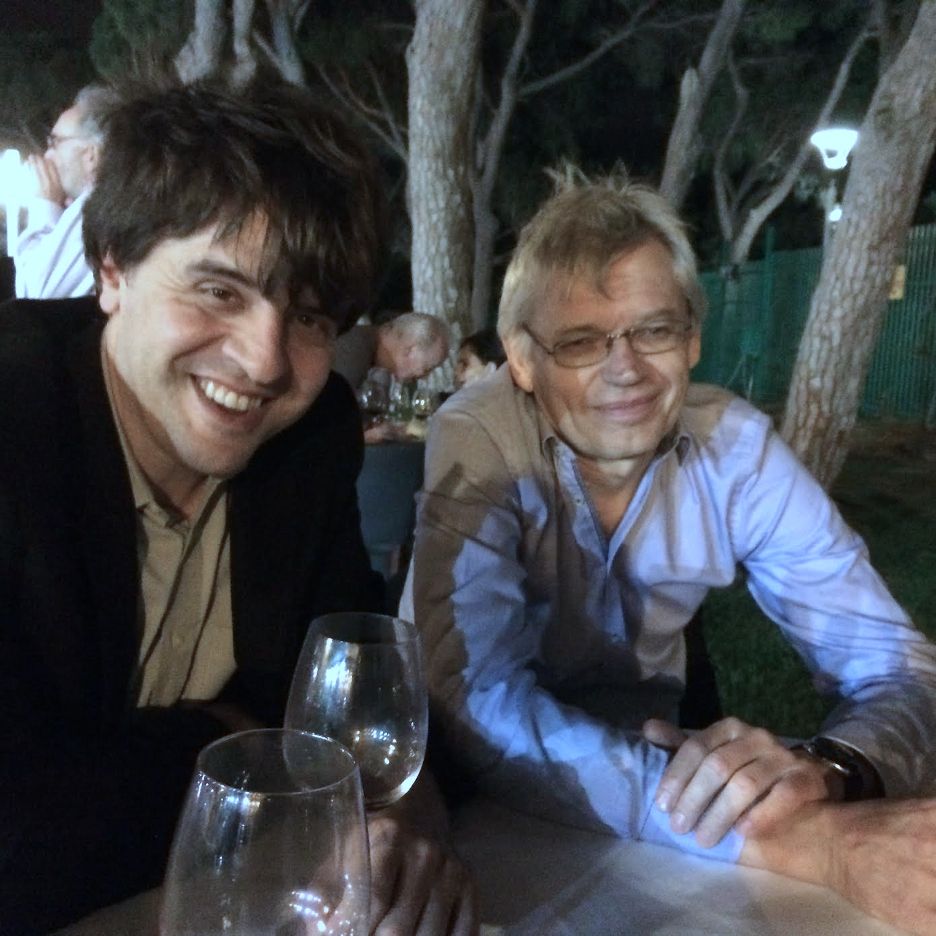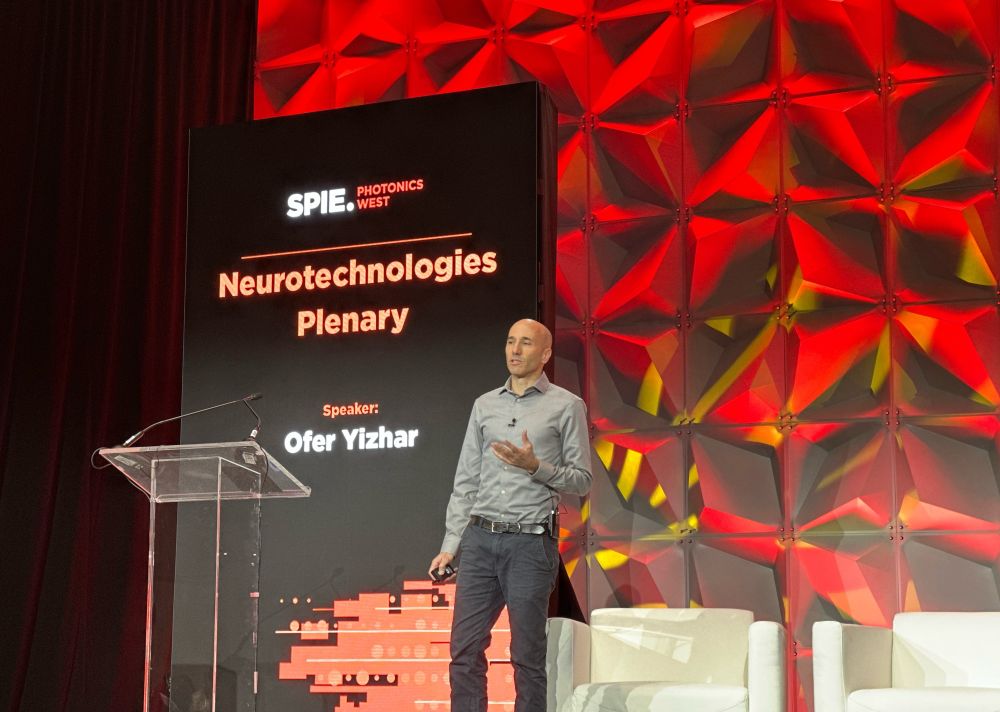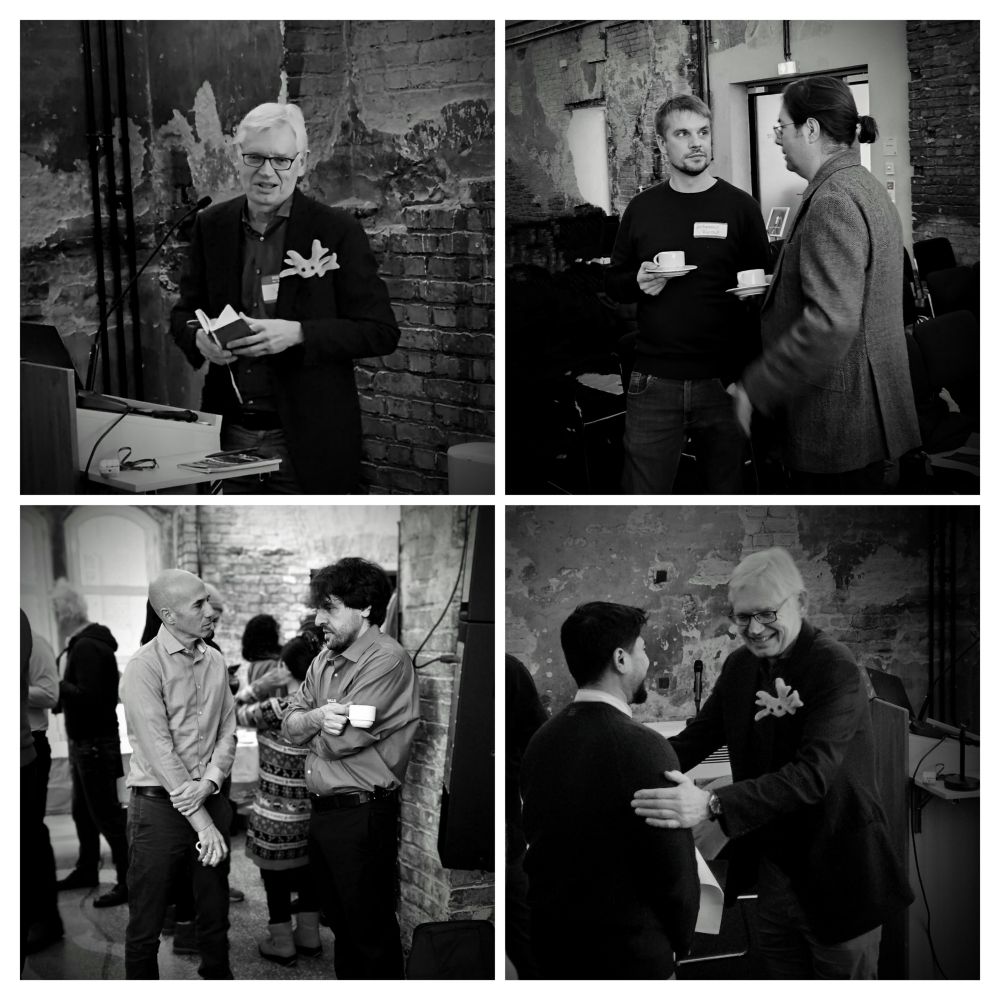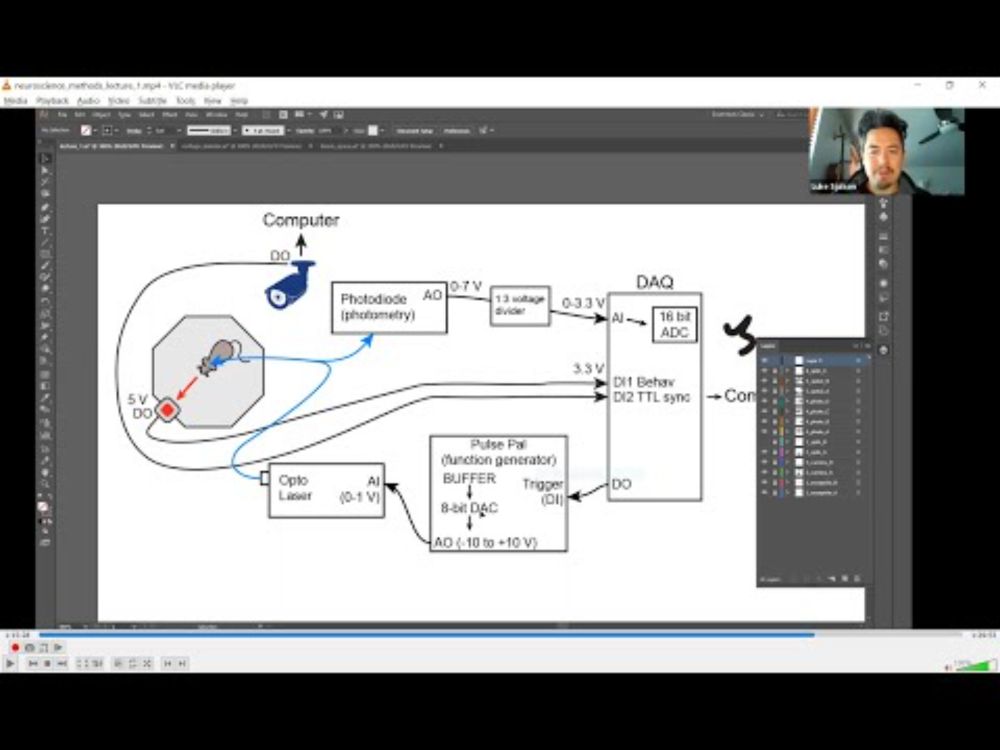
The field is buzzing about work on brain-computer interfaces for speech, the mechanism of psychedelics, a broader definition of hippocampal representations and more.
www.thetransmitter.org/community/th...
#neuroskyence #StateOfNeuroscience
@oyiz.bsky.social
Neuroscientist at the Weizmann Institute. Neural circuits for social behavior, memory and decisions; developer of optogenetic tools. Outside the lab, it’s family, running, music in many forms.

The field is buzzing about work on brain-computer interfaces for speech, the mechanism of psychedelics, a broader definition of hippocampal representations and more.
www.thetransmitter.org/community/th...
#neuroskyence #StateOfNeuroscience

Our microbial-opsin work (and most of the field ) is basic science, but it was intriguing to review clinical progress–direct & indirect–with a wonderful team of co-authors
t.co/JrJen2WGBV
& adapt a fig. of PMID:28912215 (2017) with my long-time collaborator Peter Hegemann (pic: a memory from 2017).
Really cool stuff! Engineered excitatory opsins responding to 15nW light
18.09.2025 04:23 — 👍 13 🔁 5 💬 0 📌 0
Breaking a hiatus to post this.
A group of Israeli Social Psychologists, myself included, wrote a letter to speak out clearly against the Israeli government’s decisions and the resulting devastation in Gaza.
docs.google.com/document/d/1...
In hopes of peace and safety for all, and soon
Thanks Tallie for your support and inspiration 🙏
13.09.2025 07:10 — 👍 1 🔁 0 💬 0 📌 0Thanks @gozziale.bsky.social !
12.09.2025 19:45 — 👍 0 🔁 0 💬 0 📌 0Follow @dzelmanoff.bsky.social who led this work and just joined the bsky party!
12.09.2025 15:54 — 👍 3 🔁 0 💬 1 📌 0
Very cool study by @oyiz.bsky.social using optogenetics to shed light on how oxytocin signaling regulates vocalization to maintain maternal bonds (with nice write-up by @bellonec.bsky.social, “Cries into ties” indeed) 🧪
www.science.org/doi/10.1126/...
Congrats Noa, Yuval and the team! Beautiful work!
12.09.2025 15:24 — 👍 3 🔁 0 💬 0 📌 0And to Shari Ross for the beautiful drawings
12.09.2025 15:21 — 👍 0 🔁 0 💬 0 📌 0Many thanks to my amazing team at @weizmanninstitute.bsky.social, our colleagues at the Dept. of Brain Sciences and at the Dept. of Molecular Neuroscience and the generous support of @erc.europa.eu and the NIH BRAIN Initiative
12.09.2025 15:21 — 👍 5 🔁 0 💬 3 📌 0
And this article at the Transmitter by Claudia Lopez: www.thetransmitter.org/oxytocin/oxy...
12.09.2025 15:21 — 👍 5 🔁 0 💬 1 📌 0See also this really nice write-up by @bellonec.bsky.social : www.science.org/doi/10.1126/...
12.09.2025 15:21 — 👍 4 🔁 0 💬 1 📌 0
This study was led by my fantastic PhD student Daniel Zelmanoff and a wonderful team from the lab. Check out the full paper here: www.science.org/doi/10.1126/...
12.09.2025 15:21 — 👍 4 🔁 0 💬 1 📌 0Using this approach, we were able to show that silencing oxytocin neurons specifically alters the vocal behaviors of pups when they are separated from their dam and littermates, and also alters their vocal behavior upon reunion.
12.09.2025 15:21 — 👍 6 🔁 0 💬 1 📌 0Since optogenetic manipulations are very difficult to perform at such a young age, we devised a new approach that uses our mosquito opsin eOPN3, which is red-shifted and highly light-sensitive, for transcranial silencing of hypothalamic oxytocin cells in freely-behaving pups.
12.09.2025 15:21 — 👍 8 🔁 0 💬 1 📌 0We found that oxytocin neurons are activated during a 3-hour separation from the home cage, and are also transiently recruited during the emission of ultrasonic vocalization bouts.
12.09.2025 15:21 — 👍 3 🔁 0 💬 1 📌 0This study was ignited by the discovery that oxytocin receptors reach peak expression in the brain during early life - both in humans and rodents! In mice, P14-21 and in humans from birth to 3 years. We wondered how oxytocin contributes to behavior at this critical period in an animal's lifetime.
12.09.2025 15:21 — 👍 6 🔁 0 💬 1 📌 0
Excited to share our latest paper - now out in @science.org - we showed how oxytocin modulates maternally-directed behavior in young mice (P15).
12.09.2025 15:21 — 👍 107 🔁 35 💬 4 📌 1
In the past year and a half, we have been intensively protesting and fighting the Israeli government in an attempt to stop the war, secure the release of all hostages, and prevent the ongoing humanitarian crisis. Until now, our protests have primarily been focused internally.
27.07.2025 20:36 — 👍 18 🔁 6 💬 2 📌 1
What time is it? ⏰
Time to talk about the brain! 🧠
Opening the Neurotechnologies plenary session is @oyiz.bsky.social of Weizmann Inst. of Science. He is discussing new tools that allow highly light-sensitive silencing AND facilitate spectral multiplexing for modulation + imaging.
#PhotonicsWest
First post on Bluesky!✨
(1/7) Far-red dopamine sensor is coming! Excited to introduce our chemigenetic DA sensor, HaloDA1.0! #Dopamine #FarRedSensors, #GRAB www.biorxiv.org/content/10.1...

Pictures of scientists at the symposium in honor of P.H.'s 70th birthday.
Optogenetics 7.0
🍾 Cheers 🥂
@johvierock.bsky.social
@oyiz.bsky.social
@deisseroth.bsky.social

Neuroscience students asked us to teach a PRACTICAL course on experimental methods, and it is now on YouTube!
Please like and repost to help us get the word out!
www.youtube.com/playlist?lis...
Lecture 1: Signals and data acquisition
Focusing on hardware, digital/analog I/O, synchronization
🧵
Related to this, I created a starter pack for those interested/involved in Epilepsy research. Many of the DBS folks may also be interested.
go.bsky.app/B8pPi1n
Upon popular demand I created a started pack for people interested in Deep Brain Stimulation!
Lmk if you'd like to be added!
go.bsky.app/B9A9Cho
How to rebuild your network on @bsky.app and improve your experience here?
I made a short starter guide with resources.
www.neuronaldynamics.eu/resources/bl...
Also, a thread 🧵 below.
One difference is that the DIO approach leads to the permanent removal of DNA, making it irreversible. For SIO an equilibrium between forward and reverse recombinantion is created. However the reverse probability is low, creating a bias to the activated state. In practice expression levels are good.
29.11.2024 08:50 — 👍 7 🔁 2 💬 0 📌 0The actual link in the text works. Not sure why the one below is broken - it’s auto-generated by the app 🤷🏻♂️
28.11.2024 20:24 — 👍 1 🔁 0 💬 0 📌 0Important paper!
www.biorxiv.org/content/bior...
Im not sure the Discussion fully delineates its radical implications.
No more...
* Place cells
* Grid cells, splitter cells, border cells
* Mirror neurons
* Reward neurons
* Conflict cells
(continued)